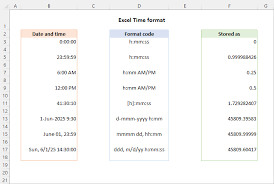The Importance of Format in Design and Communication
Format plays a crucial role in design and communication, influencing how information is perceived and received by the audience. Whether it’s a printed document, a website, an infographic, or a social media post, the format determines the overall structure, layout, and visual presentation of the content.
Clarity and Readability
Choosing the right format is essential for ensuring clarity and readability. A well-structured format helps organise information logically, making it easier for the audience to navigate and understand the content. By using appropriate headings, subheadings, bullet points, and spacing, designers can enhance readability and guide readers through the material effectively.
Visual Appeal
The format also contributes to the visual appeal of a design. The use of colours, fonts, images, and whitespace can create an aesthetically pleasing layout that captures attention and engages the audience. A visually appealing format not only enhances the overall look of a design but also reinforces brand identity and messaging.
Consistency and Branding
Consistent formatting is key to establishing a strong brand identity across different communication channels. By maintaining uniformity in design elements such as colours, fonts, logos, and layouts, organisations can reinforce their brand image and build recognition among their target audience. Consistent formatting also helps create a sense of professionalism and reliability.
Accessibility
Consideration for accessibility is another important aspect of format in design. Designers need to ensure that their formats are inclusive and cater to diverse audiences with varying needs. This may involve using clear typography, providing alternative text for images, implementing responsive design for different devices, and adhering to accessibility standards to make content accessible to all users.
Conclusion
In conclusion, format plays a vital role in design and communication by influencing clarity, readability, visual appeal, consistency, branding, and accessibility. Designers must carefully consider the format they choose for their projects to effectively convey information and engage with their target audience. By prioritising format considerations in design decisions, designers can create impactful visuals that resonate with viewers across various platforms.
Top 5 Tips for Effective Document Formatting
- Use consistent formatting throughout the document.
- Choose a clear and easy-to-read font style and size.
- Utilize headings, subheadings, and bullet points to organise information effectively.
- Ensure proper alignment of text and graphics for a professional look.
- Proofread your document for any formatting errors before finalising it.
Use consistent formatting throughout the document.
Maintaining consistent formatting throughout a document is essential for creating a professional and cohesive visual experience for the reader. By using the same styles for headings, fonts, colours, spacing, and alignment, you can establish a sense of unity and structure that guides the reader seamlessly through the content. Consistent formatting not only enhances readability but also reinforces brand identity and ensures that the document appears polished and well-organised. By adhering to a uniform formatting style, you can effectively communicate your message and maintain the reader’s engagement from start to finish.
Choose a clear and easy-to-read font style and size.
When considering format, it is essential to choose a clear and easy-to-read font style and size. The font used in a design greatly impacts the readability and overall presentation of the content. Opting for a font that is legible and appropriately sized ensures that the audience can easily consume the information without any strain or confusion. By selecting a font style and size that enhances readability, designers can effectively communicate their message and engage with their audience in a clear and accessible manner.
Utilize headings, subheadings, and bullet points to organise information effectively.
Utilising headings, subheadings, and bullet points is a valuable tip for organising information effectively. By structuring content in this way, designers can create a hierarchy that guides readers through the material, highlighting key points and facilitating easy comprehension. Headings and subheadings help break down complex information into digestible sections, while bullet points succinctly present key details or lists. This format not only enhances readability but also improves the overall flow of the content, making it more engaging and accessible to the audience.
Ensure proper alignment of text and graphics for a professional look.
To achieve a polished and professional appearance in design, it is crucial to ensure the proper alignment of text and graphics. By aligning elements consistently, designers create a sense of order and cohesion that enhances the overall visual appeal of a layout. Whether it’s aligning text with images, maintaining a grid structure, or aligning elements along a central axis, attention to alignment detail can significantly elevate the professionalism of a design and improve readability for the audience.
Proofread your document for any formatting errors before finalising it.
Before finalising your document, it is essential to meticulously proofread it for any formatting errors. Checking for consistency in fonts, spacing, alignment, and overall layout ensures that your content appears professional and polished. By conducting a thorough review of the formatting, you can rectify any inconsistencies or discrepancies that may detract from the visual appeal and readability of your document. Taking the time to proofread for formatting errors demonstrates attention to detail and a commitment to delivering high-quality work.
